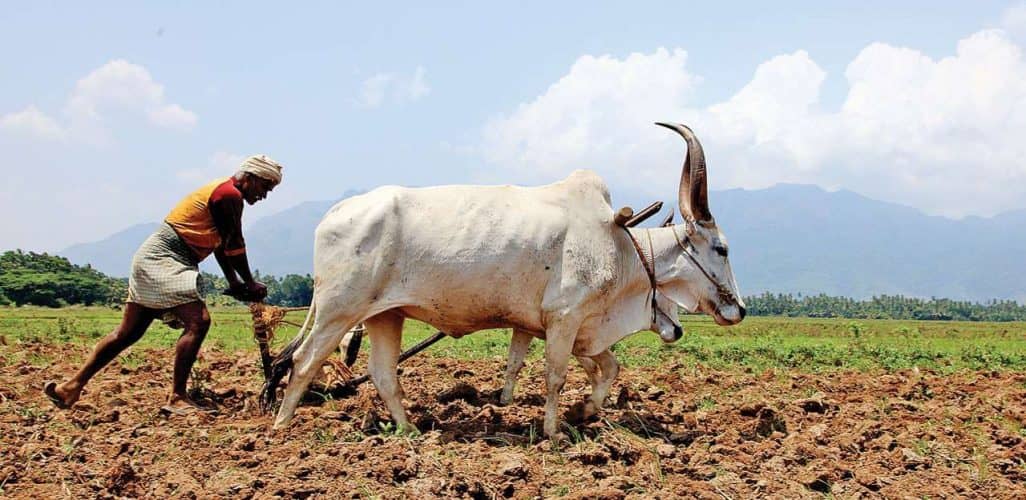Indian Government led by Prime Minister Narendra Modi in the last budget of its tenure has largely tried to woo the countryside. The government in its effort to please the major vote bank in the country has vowed a sum of 750 billion rupees for the support of farmers. The latest budget has also cut tax burden for the middle class. This is the final budget of the government before the country heads for its general elections in May this year.
The ruling government is already facing flak from the farmers due to lower incomes from farming and the growing doubts that the policies of the Modi government have failed to create enough jobs, a fact which was exposed by a recent report which stated that the employment is highest in the last 45 years. The opinion polls which are pouring in from different corners are pointing to the developing fact that the ruling Bharatiya Janata Party will not be able to retain its majority in the Parliament. Modi government thus tried to give a budget to muster support in the rural areas where the major chunk of Indian population lives. The budget was also directed to please the urban middle class. In direct support to the rural areas, the interim budget for the financial year 2019-2020, the government has offered a cash allowance of Rs. 6000 to around 120 million poor farmers along with additional funds for the rural jobs guarantee scheme and development in rural areas. Latter will involve building lasting infrastructures like roads and homes. The government has also proposed a pension scheme for millions working in the unorganized sector. Latter has nearly 420 million people employed.
In a bid to woo the urban middle-class Modi government has relaxed the income tax slab and has exempted people with income around Rs. 500,000 from paying income tax. This was initially fixed at Rs. 250,000. The acting finance minister, Mr. Piyush Goyal has stated that the budget is a clear vehicle which will spell developmental transformation in the country. Mr. Goyal has presented the interim budget as the Finance Minister Mr. Arun Jaitley is in the United States for medical treatment. Goyal stated that India is again back on route to success and is continuously moving forward on the road of growth and prosperity. Goyal also said that the country is expected to expand nearly 7.2 percent in this fiscal year and will continue to remain among the fastest growing economies of the world.
However, a separate report put by the Business Standard just a day before has come to challenge the claims of the government in regards to the economic outlook. The report primarily highlighted the fact that the government deliberately did not let a report on the unemployment rate of India to surface on its stipulated time. Latter had shown the unemployment in India stood at a dismal figure and is highest seen in decades.
The budget which is designed with an eye on elections is primarily focussed on rural areas, favorable to farmers, urban middle class, people working in the unorganized sector, Small and Medium Enterprises. It has also allocated 600 billion rupees for rural jobs programme and another 190 billion for building roads in the countryside.
The acting finance minister Mr. Piyush Goyal has set the fiscal deficit target for 2019-2020 at 3.4 percent. This is slightly higher than the earlier figure of 3.1 percent. Goyal added that the deficit would eventually come down to 3 percent of the Gross Domestic Product, in the next two years. The budget has placed populism over fiscal prudence and is expansionary thus making it a typical election budget. The budget does not give a good indication for near term targets of fiscal consolidation. The credit rating agency Moody had previously warned about the fiscal health of the nation. The budget has did not affect Moody’s rating about the Indian economy.
Financial experts have expressed doubt over the ability of the Indian government to be able to catch with its revised targets of fiscal deficit in the coming financial year as the revenue projections by the government primarily from the Goods and Services Tax are highly optimistic.
Economists have expressed worries that the targets set by the government in the budget are too aggressive especially about the robust growth in revenue. Any party which forms the government will face a tough time meeting the same even in the next two years. If the tax collections are not raised then, the upcoming government will have to take more steps like capital spending to fulfill the target. This will serve as a great blow especially to the economy which already needs better infrastructure and thus leave the government with very less room for adjustments.
Most of the measures announced by the government are intended to put the money back into the pockets of the mass population as the election approaches. Modi government has to fight hard to win re-election in the elections as many of the measures taken during his tenure have hit the incomes of the farmers which led to the defeat of ruling BJP in many state elections. The unpopular measures introduced by the government have strengthened the position of Congress.
The investors have also lowered their outlook for the next fiscal year especially for rate cuts as there is an air of doubt if the government will be able to reach its target as stated in the budget. The next government will have to deal with any or all repercussions of the budgetary promises. The task will be bigger still if no single party can bad a majority at the Centre. Even if Modi government does not come to power in May, any party which will form a government will not be able to take back the policies as none will want to sound anti-farmer or anti-masses. Thus, there will be constant pressure on the incoming government to maintain fiscal prudence.




